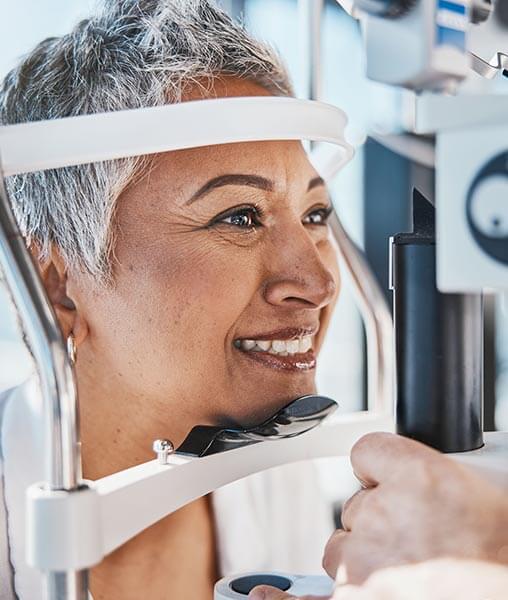Clear Lens Extraction

What is Clear Lens Extraction?
You can think of clear lens extraction as a premature cataract surgery. The clear natural lens of the eye is removed and a man-made implant that will last longer will replace it.
The procedure is incredibly similar to cataract surgery, and while it is often considered a cosmetic procedure and not covered by insurance, it can make a wonderful impact on the rest of your life. There are many different types of replacement lenses, known as intraocular lenses (IOLs), and together with your surgeon you will be able to determine which lens option best fits your lifestyle.
Lens Types
Standard Lens Replacement
The standard intraocular lens is a monofocal lens, which can focus light rays at near or far distances but not both. Most of our patients prefer their vision to be optimized for distance and then will wear reading glasses for tasks like reading, knitting, crosswords, etc. This is the first lens of its kind to be developed, and has been proven to be safe and effective.
Toric Intraocular Lens
A special benefit of Toric IOLs is that these lenses can correct astigmatism. Astigmatism is caused by an irregular shape of the cornea or lens, resulting in pointier rather than rounder shaped eyes. These are also monofocal lenses, so you will have the choice of having your distance or near vision optimized depending on your lifestyle.
Multifocal Intraocular Lens
Unlike the monofocal lenses, a multifocal IOL has different zones within the lens that allow you to focus on objects that are either near or far away. This type of lens is used to reduce dependence on glasses, so you won’t have to always be searching for your reading glasses.
Crystalens Accommodation Intraocular Lens
An accommodating IOL can actually shift position in your eye, mimicking the original lens. This type of lens is used to reduce your dependence on glasses at distances both near and far. Its range of vision is not as vast as a multifocal IOL but the incidence of glare is lower with the accommodating IOL.
ReSTOR®
If you’re seeking as much freedom from glasses as possible, the AcrySof® IQ ReSTOR® multifocal IOL may be the best choice for you. Dr. Schultze was the first surgeon in upstate New York to perform and perfect this surgery. The ReSTOR lens gives you the best opportunity for improved image quality at a full range of vision—near, far and everything in between—with increased independence from glasses or bifocals.
The results of the AcrySof® IQ ReSTOR® IOL clinical trials have indicated that there is a slightly greater chance of experiencing glare and halos around lights when compared to a traditional monofocal IOL. However, over time you may grow accustomed to these disturbances and cease to notice them. If freedom from glasses is your priority, then these lenses are a wonderful option for you.
Although not all IOLs provide a full range of vision like the AcrySof® IQ ReSTOR® IOL, there are instances when a monofocal lens may offer more desirable outcomes for certain patients. For these situations, Alcon offers the AcrySof® IQ IOL. Both the AcrySof® IQ IOL and the AcrySof® IQ ReSTOR® IOL can restore your vision following cataract surgery or clear lens extraction while offering the enhanced image quality of an aspheric optic.
TECNIS®
Unlike conventional single-vision (monofocal) lens implants, TECNIS® Multifocal Lens provides patients with high-quality vision at any distance, and in any light condition—even in low light. After receiving this lens you will be able to see anything at any time, be it near, far or in between. You will no longer have to settle for monofocal lenses that only provide good distance vision, but with limited ability to see objects that are near without glasses.
Similarly to the AcrySof® IQ ReSTOR® IOL, the results of the TECNIS® Multifocal Lens clinical trials have indicated that there is a slightly greater chance of experiencing glare and halos around lights, when compared to a traditional monofocal IOL. Again, you will likely cease to notice these halos over time.
The advanced TECNIS® Multifocal is an implantable lens that restores vision after cataract surgery and corrects presbyopia (the need for reading glasses). It delivers results superior to those of a standard lens implant and offers an excellent chance to become completely free of spectacles.

